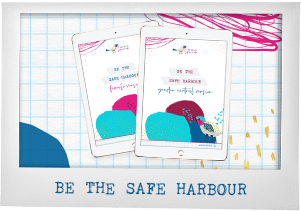Backstabbing, eyerolls and exclusion: the bully tactics favoured by girls
In 1988, when I was fifteen, a classmate had her personal diary stolen out of her school bag, photocopied and taped up on the walls of the senior girls’ toilets. A new student was the target of a whisper campaign – instigated by her former best friend. She felt so ostracised that she was rumoured to have attempted suicide and eventually left the school. Yet another girl regularly started lunch each day by pulling her school bag out of the bin.
Fast forward thirty years and yet another prominent Brisbane private school is forced to call in the police when the bullying by a group of girls spirals out of control. When the bullies started harassing their victim online, the police were called in to mediate, explaining to the perpetrators that what they were doing was not just illegal but could easily result in charges of harassment.
Despite the current hype, female bullying is nothing new … it’s just the devastating impact that experts had – until now – under-estimated.
Behaviour that was once dismissed as girls “just being bitchy” is today acknowledged as “relational bullying”. It’s a new tag for those age-old, indirect (and often vicious) forms of aggression favoured by girls: backstabbing, exclusion, rumour spreading and the manipulation of friendships. Today it is recognised as the most pervasive form of bullying amongst girls and boys – perhaps because it so easily goes unnoticed by teachers or parents.
Relational bullying is distinct from physical and verbal bullying because it’s a silent campaign aimed at inflicting psychological pain on the target and breaking up their relationships with others. It can be as subtle as a withering glance, as painful as lunchtime exclusion and as insidious as an email hate campaign designed to ruin the victim’s reputation.
It’s hardly surprising then that experts now believe that relational abuse is often more damaging to the long-term psychological health of its victims than either physical or face-to-face verbal abuse.
Dr Ken Rigby is one of Australia’s leading authorities on school bullying and peer victimisation, having written more than 60 research papers and numerous books on the topic.
A survey conducted by Rigby of 700 school students confirmed that they found “relational bullying” to be the most hurtful form of abuse.
“Of course we shouldn’t make the assumption that if someone is savagely beaten, it’s any less traumatising. The point is that relational bullying is having a greater short-term and long-term impact than had ever been supposed. It’s happening more often than we thought and its results can be deadly.”
Results like loss of self-esteem, anxiety, depression, social alienation, absenteeism and suicidal thinking. In the long-term, a formerly bullied child may have difficulty in trusting people, recurring social anxiety and depression.
“Research shows that one in six Australian children is bullied on a weekly basis,” says Rigby. “I don’t think we’re taking bullying seriously enough.”
Rigby points out that relational bullying is not limited to girls. Although, he admits that most research indicates that girls are more likely to be the perpetrators – and the victims – of this more Machiavellian form of aggression.
A point backed up by Rosalind Wiseman, author of Queen Bees and Wannabes, a non-fiction book designed to help parents guide their daughters through the female politics of school.
“For starters, power for girls is about who has the most ‘Girl World’ things,” says Wiseman, using a phrase she coined to describe those things girls feel are vital to their survival. “Being generically pretty, having the most money so that they have the right style, having the right boyfriend, knowing how to communicate well with adults so that they leave you alone … these give you power as a teenage girl. And you don’t have to have all those things but it’s about who has the most. And it’s the rush – the competition for them – that creates the hierarchy amongst girls.”
Ask Wiseman why girls are more likely to bully one another using methods like gossip and exclusion, and she’ll tell you that it’s part biology and part sociology.
“Biologically, it’s about girls and their verbal abilities,” says Wiseman, acknowledging the power of words. “But in terms of sociology, girls are raised being told that they cannot be straight forward with their feelings when they’re angry and that they are not to be directly confrontational. This leaves girls feeling that they have to do things in a more backhanded, surreptitious kind of way.”
Both Rigby and Wiseman agree that relational bullying isn’t on the increase but that the advent of technology like email, the internet and mobile phones has meant that bullies now have more tools at their disposal. Today a rumour can be spread to hundreds of people at the push of a ‘send’ button.
Many schools – and experts – are divided on the best way to handle bullies. Aside from suspension and expulsion in extreme cases, Wiseman talks about personalising punishments.
‘You scan the horizon of that child’s life and figure out what is the thing that they value most and you take that away. It doesn’t matter how good they are on the soccer team or in the school play – those things are privileges, not rights. If you punish a kid and take things away that don’t matter to them, then what they think is, ‘If I’m good at something, then I can get away with murder’.”
Rigby says a restorative justice approach can sometimes be effective in cases of severe bullying. Bringing the victim and bully together, the process gives the victim the opportunity to speak out and the bully’s behaviour (rather than the bully) is adequately shamed. The bullying student is also made to restore whatever harm they have done to their victim – if that’s possible. Handled properly, restorative justice makes the bullying student take personal responsibility for their behaviour, while still offering them support and forgiveness by their school community.
When relational bullying is allowed to thrive in schools, it gives perpetrators an open door to take their behaviour – spreading rumours, excluding others and manipulating situations – into workplaces, sporting clubs and boardrooms.
Acknowledging the seriousness of relational bullying is the first step towards creating a culture that says manipulation and covert aggression are unacceptable … regardless of whether it occurs under the teacher’s nose, online or on the walls of the senior girls’ toilets.
Dr Ken Rigby is an Adjunct Associate Professor of Social Psychology and is an expert on school bullying and peer victimisation.
Rosalind Wiseman is the author of Queen Bees and Wannabes: Helping Your Daughter Survive Cliques, Gossip, Boyfriends & Other Realities of Adolescence.
categories
You might also like...
About Bec
Over the past 25 years Rebecca Sparrow has earned a living as a travel writer, a television publicist, a marketing executive, a magazine editor, a TV scriptwriter, a radio producer, a newspaper columnist and as an author.
social media

subscribe
Want to know if your child is ready to have a social media account?
Enter your details below and I'll send you my 4-point checklist.




